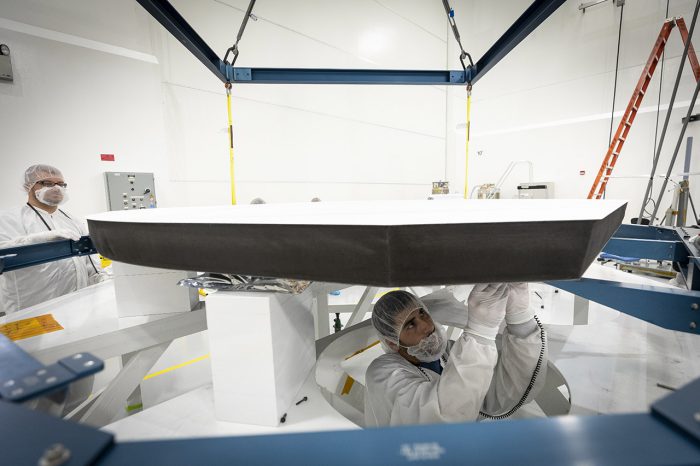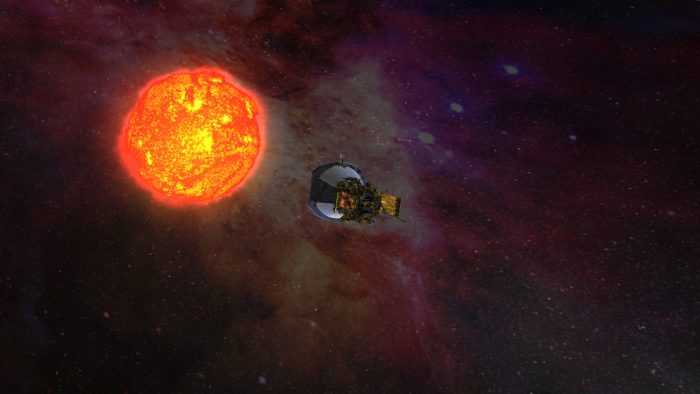This just in: The Sun is hot.
Tell us something that we don't know!
Sure, sounds obvious. But when it comes to sending a probe to investigate the Sun—which is exactly what NASA is planning on doing next month—this is a fact that requires some real investigation. Because while the Parker Solar Probe is a terrific idea and we're all excited to learn more about that beautiful shiny ball up there, it doesn't do us any good if the probe melts before things get started!
But hey, no sweat (haha!), science has it covered.
A shield, some water, and temperature vs. heat

Installing the heat shield on the Parker probe. (NASA/Johns Hopkins APL/Ed Whitman)
Much of the science behind how the Parker Solar Probe will withstand temperatures in the Sun's corona, or atmosphere, that will reach millions of degrees is surprisingly simple.
First, there's a shield, which makes sense. It's painted white (a colour that reflects solar rays), and it's made of carbon-carbon, a substance similar to the graphite used in tennis rackets and hockey sticks. Then, there is a system that pumps water around the components of the probe. As the water circulates from the front to the back of the spacecraft, it goes from hot to cooler and back. Like the radiator of a car or even our own body's circulatory system, keeping the liquid moving makes sure that nothing stays for too long in the hottest area.
These ideas, while practical, aren't shocking. But we told you that this science was amazing, and we meant it! Because none of this stuff would work without this stunning fact of science: temperature and heat are not the same thing!
What's the difference?
Temperature is a measure of the speed at which particles are moving. Normally, the faster those particles are moving, the more they transfer, or give, energy to an object nearby. This transfer is called heat.
When an object is heated up, its own molecules begin moving faster, too. Now its temperature is raised, as well! But if an area is at a high temperature but the particles aren't close together, the transfer of heat is much slower. That's why the air in an oven at 190°C is something that we can put our hand in, whereas boiling water that is 90° cooler burns us almost instantly.
Air is way less dense than water. Which is way less dense than metal. The denser the object, the hotter it is. Back to the Parker probe, it will be able to handle the mind-blowing temperature of the corona for one reason—the corona's particles are VERY spread out. Sure, its heat shield will still reach about 1,370 C° (2,500 F°). But behind that shield? Everything should stay around 30 C° (85 F°). That's a pretty hot day on Earth. But it's nothing when you're visiting the Sun!
Learn more about this incredible tech in the video below!
 The Parker Solar Probe is going to be taking advantage of some simple yet amazing science to stay intact during its orbit of the Sun. (NASA/JHUAPL)
The Parker Solar Probe is going to be taking advantage of some simple yet amazing science to stay intact during its orbit of the Sun. (NASA/JHUAPL)









